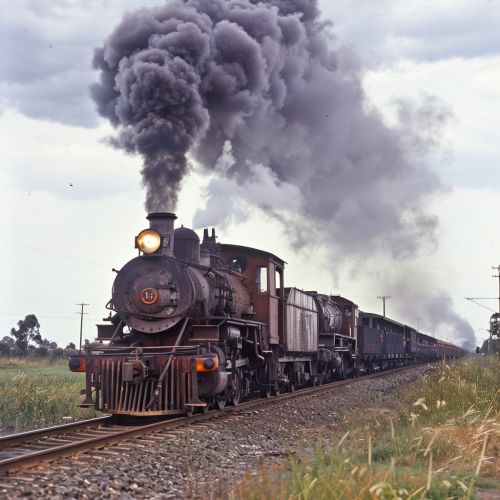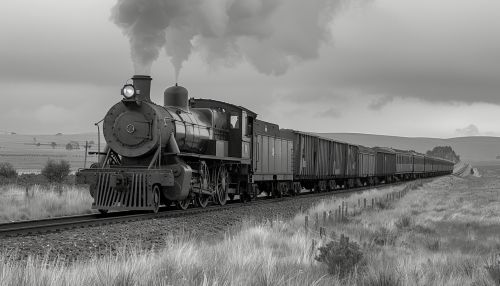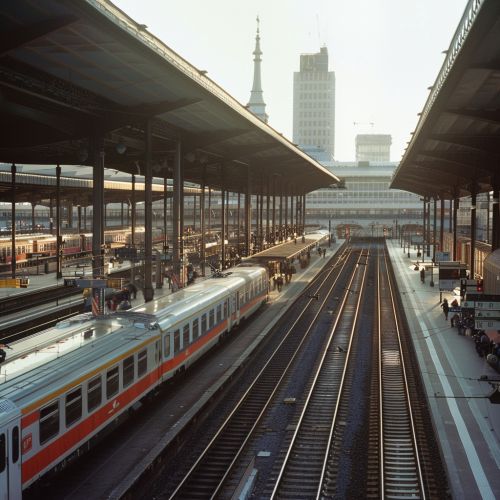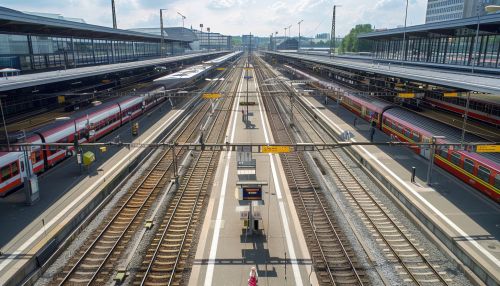Railroad
History
The history of railroads dates back to the ancient Greeks, who used a precursor to the modern rail system to transport boats across land. However, the first true railroads, as we understand them today, were built in the early 19th century in the United Kingdom. These early railroads were powered by steam engines, a revolutionary technology at the time. The first public railway to use steam locomotives was the Stockton and Darlington Railway, which opened in 1825.


The success of the Stockton and Darlington Railway led to a rapid expansion of railroads throughout the UK and soon after, the rest of the world. In the United States, the first railroad was the Baltimore and Ohio Railroad, which began operations in 1830. The advent of railroads had a profound impact on society, revolutionizing transportation and facilitating the Industrial Revolution.
Technology
The technology behind railroads has evolved significantly since the days of the steam locomotive. In the late 19th and early 20th centuries, the steam engine was gradually replaced by the more efficient diesel engine. The first diesel locomotive was introduced in the 1890s, but it wasn't until the 1930s that diesel began to replace steam on a large scale.
Today, many railroads use electric locomotives, which are powered by overhead wires or a third rail. Electric locomotives are more efficient and environmentally friendly than their diesel counterparts. Some modern trains, such as the Maglev train, use magnetic levitation to achieve incredibly high speeds.
Infrastructure
The infrastructure of a railroad includes the tracks, stations, and signaling systems. The tracks consist of two parallel steel rails, which are supported by wooden or concrete ties. The distance between the rails, known as the gauge, varies from country to country. The most common gauge worldwide is the standard gauge, which is 1,435 mm (4 ft 8 1⁄2 in).
Stations are the points at which passengers board and disembark from trains. They range from simple platforms to large, complex buildings with multiple platforms and amenities such as ticket offices, waiting rooms, and shops.
The signaling system is crucial for the safe operation of the railroad. It controls the movement of trains, preventing collisions and ensuring that trains run on time. The most advanced signaling systems, such as the European Train Control System (ETCS), use digital technology to automatically control train speeds and movements.


Impact on Society
The impact of railroads on society cannot be overstated. They revolutionized transportation, making it possible to move people and goods over long distances quickly and efficiently. This facilitated the Industrial Revolution, as raw materials could be transported to factories, and finished goods could be distributed to markets.
Railroads also played a key role in the settlement and development of many countries, particularly the United States and Canada. They allowed for the rapid westward expansion of these countries in the 19th century, opening up vast tracts of land for settlement and agriculture.
In the modern era, railroads continue to play a vital role in the global economy. They are a major mode of transportation for goods, particularly bulk commodities such as coal, oil, and grain. Passenger rail is also important in many parts of the world, particularly in densely populated regions such as Europe and Asia.
